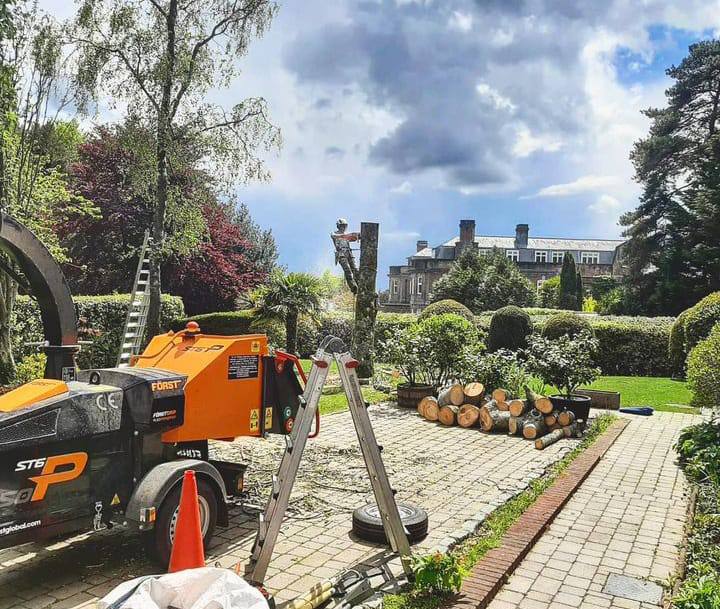Cultivating Flavour: Tree Reshaping for Culinary Gardens with Burton Joyce Tree Surgeons
Introduction: In the world of culinary delights, there’s nothing quite like the satisfaction of harvesting fresh ingredients from your garden. Culinary gardens offer a bounty of herbs, fruits, and vegetables, providing home chefs with various flavours to elevate their dishes. At Burton Joyce Tree Surgeons, we recognise the importance of trees in creating thriving culinary gardens, which is why we’re exploring the art of tree reshaping to optimise these fruitful spaces.
The Role of Trees in Culinary Gardens:
Trees contribute to the diversity and abundance of culinary gardens in numerous ways. Fruit-bearing trees such as apple, pear, and cherry provide a seasonal bounty of delicious fruits, while nut trees like walnut and almond offer protein-rich additions to recipes. Trees, such as vines and espaliers, can provide shade, shelter, and support for climbing plants.
However, trees in culinary gardens may require occasional reshaping to ensure optimal growth, productivity, and accessibility. Tree reshaping techniques can help maintain the health and vigour of trees while maximising their contribution to the garden’s culinary bounty.
Enhancing Productivity Through Reshaping:
Tree reshaping for culinary gardens involves carefully pruning and shaping trees to promote healthy growth and abundant fruit production. By selectively removing branches, shaping the canopy, and managing tree size, we can optimise sunlight exposure, air circulation, and nutrient distribution, resulting in more robust and fruitful trees.
For example, pruning techniques such as thinning and selective pruning can help reduce overcrowding within the canopy, allowing for better air circulation and light penetration. This promotes the ripening of fruits and reduces the risk of disease and pest infestations.
Creating Functional and Beautiful Spaces:
In addition to enhancing productivity, tree reshaping can contribute to culinary gardens’ aesthetic appeal and functionality. Well-shaped trees add visual interest and create inviting spaces for outdoor dining and entertaining.
Espaliered fruit trees, trained to grow flat against a support structure, are a prime example of how tree reshaping can combine form and function in culinary gardens. These ornamental yet productive trees save space and provide a striking focal point and a continuous harvest of fruits throughout the season.
Promoting Sustainability and Self-Sufficiency:
Culinary gardens represent a commitment to sustainability and self-sufficiency, allowing individuals to reduce their reliance on store-bought produce and embrace a more holistic approach to food cultivation. By reshaping trees to optimise their productivity and health, we support this sustainability ethos and help gardeners maximise the potential of their culinary landscapes.
Conclusion: Tree reshaping is a valuable tool for enhancing culinary gardens’ productivity, beauty, and sustainability. Experts are dedicated to helping gardeners cultivate thriving and bountiful culinary landscapes through expert tree care and reshaping services. Whether you’re a passionate home chef seeking to elevate your culinary creations or a green-thumbed enthusiast looking to maximise the potential of your garden, they are ready to help.
Call us on: 0115 647 1164
Click here to find out more about Burton Joyce Tree Surgeons
Click here to complete our contact form and see how we can help with your tree’s needs.

